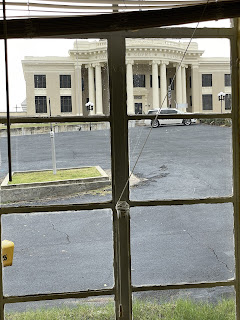JUSTICE
Union a small factory town in South Carolina is full of many stories. The local eatery (The Bantam Chef) is always busy. Pictures of local football legends adorn the wall. It almost seems like half the town works there and the other half eat there. Union is not a big place. The Monarch Mill once defined the town until it closed sending unemployment to nearly 20%.
The economy has recovered since then, but stories about the history of the place linger. Sherman on his march to Atlanta bypassed Union, flood waters sparing the burning of the place. Segregation persisted here through the restoration. In 1860, there were more enslaved than free people living in South Carolina.
The town has a noted used book store that supports the library. It has moved to different locations over the years. Our last visit found the books moved to a historic building in town, the once black only Union Community Hospital. You could feel the history here. Books sales were now on a donation basis, no attendant presiding. Left alone, we wandered through the building. Artifacts from the hospital, an examination table, a case holding instruments and room attachments served as constant reminders.
Lawrence Long, a black physician started the hospital in 1932. It served as the only place black people could get specialized treatment. Over the years, other black physicians worked and attended lectures there including Charles Drew who developed blood plasma. All that is now gone, the hospital being closed 30 years ago.
One cannot tour the building without being draw to one particular room where the The Equal Justice Initiative have an exhibit. Here among brochures two pictures of black people being hanged and jars of soil from the hanging sites sit in a silent corner. Turning, you look out the worn hospital window at the bright white pillars of the Union Court House across the street. How close justice was to the hospital, but how far away it must have seemed.




Comments
Post a Comment